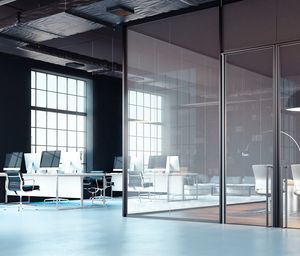KANBrief 2/19

This question was posed by KAN in conjunction with the DGUV at the Dresden Prevention Forum on 6 March 2019. In a discussion chaired by Dr Norbert Lehmann (ZDF), experts from industry and the research and occupational safety and health communities debated whether and how OSH-related research, standardization and regulation are able to keep pace with the strongly accelerated progress of technical development at office workplaces.
The audience participated strongly in the discussion, prompted by three motivational talks and a keynote speech:
Dr Markus Reimann, Head of corporate health management at Deutsche Bank AG, described how open, variable and transparent spatial concepts require a balance between working areas and areas with greater privacy. In Reimann’s view, standardization would need to be used creatively, or creativity standardized, if the right balance is to be reached between aspects of protection and the rapidly changing spatial concepts. The occupational safety and health lobby has a significant opportunity to redefine itself as a service provider, evolving from an evaluator and advisor into an “intrapreneur” that uses its particular expertise innovatively and preventively for further development in companies.
According to Dr Dieter Lorenz, Professor of human factors at the TH Mittelhessen University of Applied Sciences, teleworking, which is subject to statutory regulation, will be supplanted by mobile work and dynamic spatial concepts. In turn, if employees no longer spend most of their time in the office, traditional leadership concepts and forms of co-working will change. This will give rise to new risks, since traditional occupational safety and health measures are effective only within office buildings and at static workplaces. In Lorenz’ view, occupational safety and health measures may no longer be laid down by specialists, but will have to be defined and put into practice by individuals themselves. This gives rise to concerns for example that overload or musculoskeletal diseases may increase.
Maximilian Zettlitzer is a planner of new office environments at if5 design GmbH. He argues that a distinction should be drawn between static and temporary workstations, and that deviations from the norm should be permitted. Greater freedom of choice in selecting the location of work reduces static postures, for example: there is no such thing as the “right” seating position, just as a “wrong” seating position also does not exist. In Zettlitzer’s view, statutory provisions should address the new areas of conflict of static vs. dynamic postures, static vs. temporary locations of work, and trust/freedom vs. a traditional nine-to-five working day. In order for intelligent office environments to be created from the elements of human being, space and technology and for these environments to be experienced and appreciated, he considers transparency and worker participation at every stage to be essential.
These contributions were followed by the keynote speech held by Andreas Stephan. Stephan is Chair of the Office Sub-committee of the DGUV’s Administration Expert committee and a member of the working group of the Working Premises committee responsible for drawing up the ASR A6 “VDU work” regulation, and has a leading role in the standardization of office furniture. In his opinion, it has been possible up to now to review and update existing provisions in time. However, this is increasingly becoming a challenge.
Corrado Mattiuzzo
mattiuzzo@kan.de